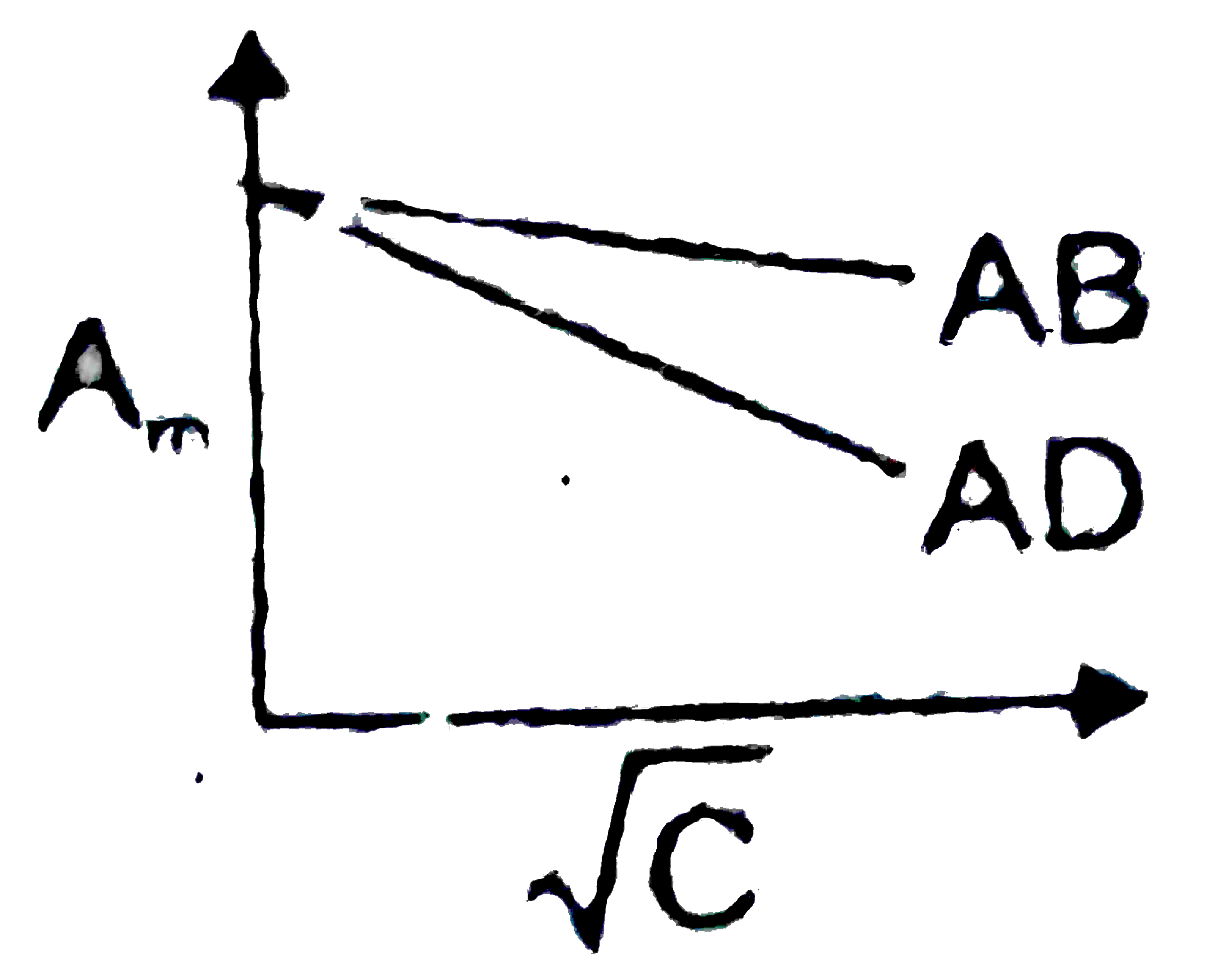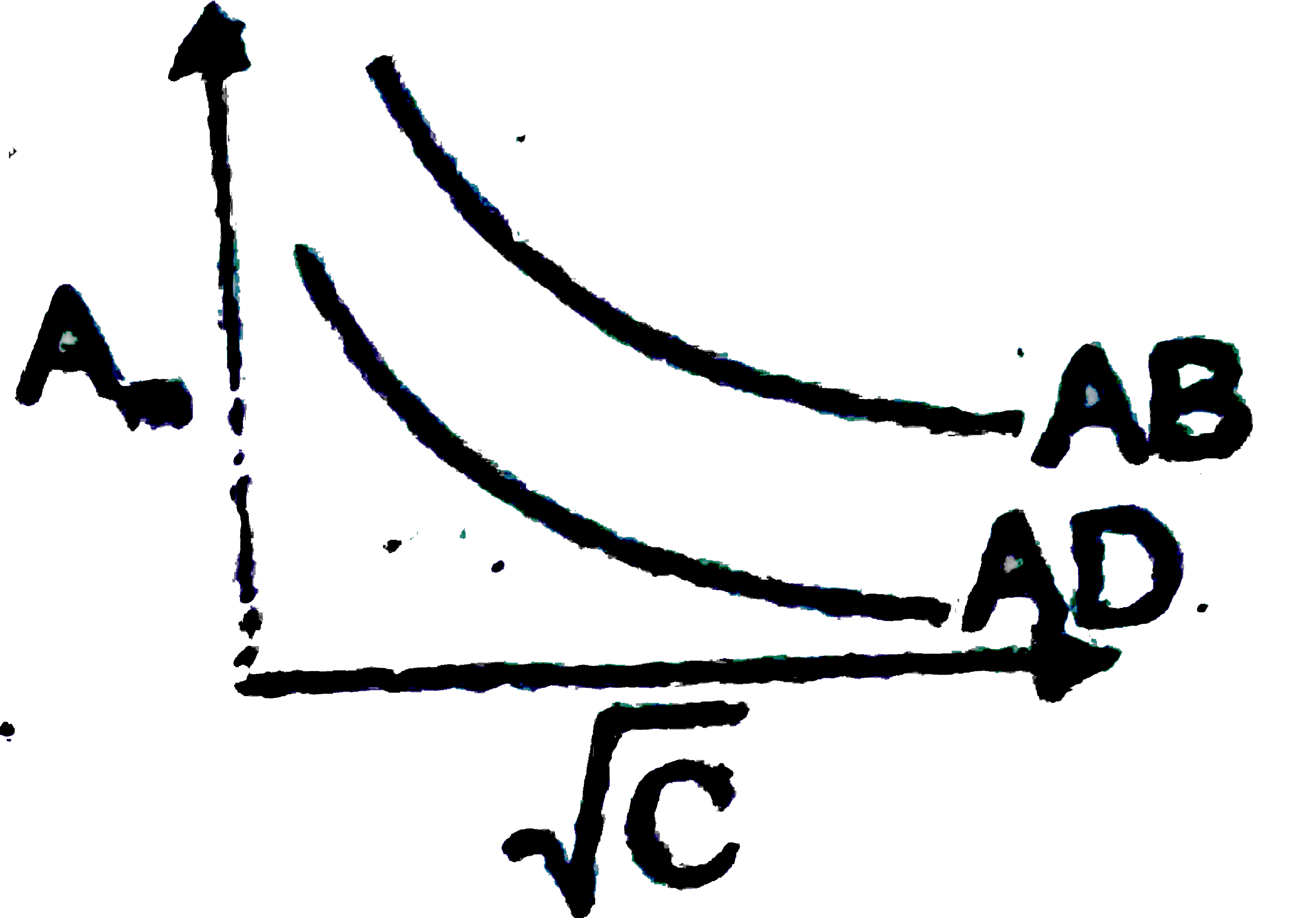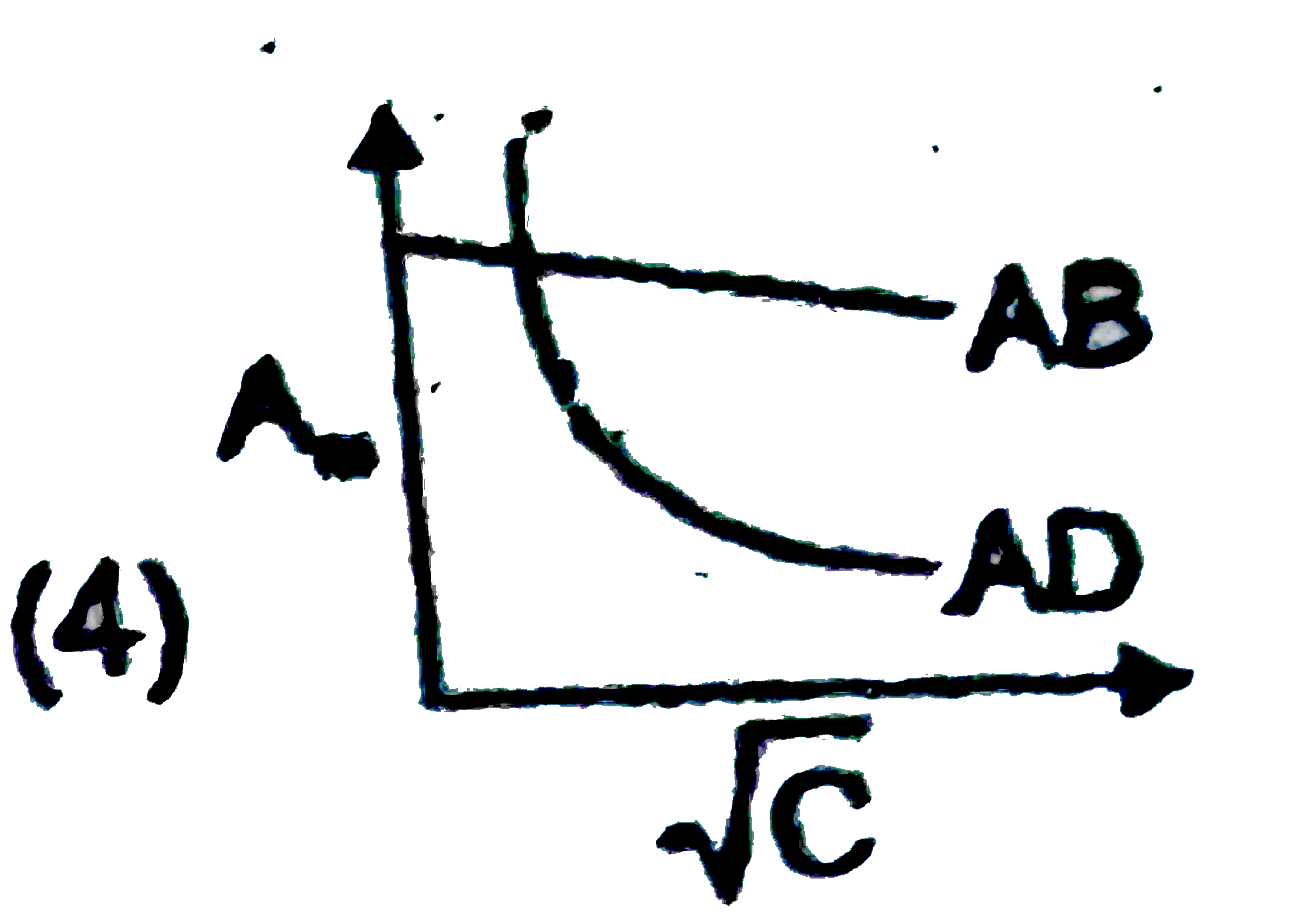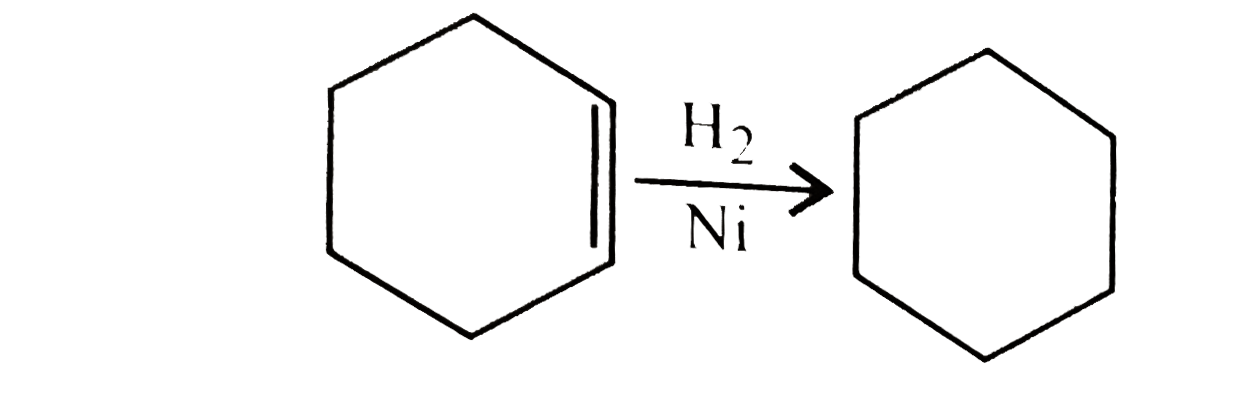Which of the following graphs are correct for strong electrolyte AD and AB.




The correct Answer is:2
To determine which graphs are correct for strong electrolytes AD and AB, we need to analyze the relationship between molar conductivity and concentration for strong electrolytes.
1. Understanding Molar Conductivity:
- The molar conductivity (Λ) of a strong electrolyte is given by the equation:
Λ=Λ0−B√C
where:
- Λ0 is the molar conductivity at infinite dilution,
- B is a positive constant,
- C is the concentration of the electrolyte.
2. Graph Representation:
- In the equation, if we compare it with the linear equation y=mx+c:
- y corresponds to molar conductivity (Λ),
- x corresponds to √C,
- The slope m is equal to −B,
- The y-intercept c is equal to Λ0.
3. Characteristics of the Graph:
- Since the equation represents a straight line, the graph of molar conductivity versus √C should be a straight line.
- The y-intercept indicates the molar conductivity at infinite dilution, which should differ for different electrolytes.
4. Analyzing the Options:
- Option 1: This graph shows a straight line with the same y-intercept for both electrolytes. This is incorrect because different electrolytes cannot have the same molar conductivity at infinite dilution.
- Option 2: This graph also shows a straight line, but with different y-intercepts for the two electrolytes. This is correct as it indicates that the molar conductivities at infinite dilution for AD and AB are different.
- Option 3: This graph is curved, which is not possible for strong electrolytes as per the linear relationship we derived.
- Option 4: Similar to option 3, this graph is also curved, which is incorrect.
5. Conclusion:
- The only correct graph for the strong electrolytes AD and AB is Option 2, as it shows a straight line with different y-intercepts.
Final Answer:
The correct graph for strong electrolytes AD and AB is Option 2.
- The molar conductivity (Λ) of a strong electrolyte is given by the equation:
Λ=Λ0−B√C
where:
- Λ0 is the molar conductivity at infinite dilution,
- B is a positive constant,
- C is the concentration of the electrolyte.
- In the equation, if we compare it with the linear equation y=mx+c:
- y corresponds to molar conductivity (Λ),
- x corresponds to √C,
- The slope m is equal to −B,
- The y-intercept c is equal to Λ0.
- Since the equation represents a straight line, the graph of molar conductivity versus √C should be a straight line.
- The y-intercept indicates the molar conductivity at infinite dilution, which should differ for different electrolytes.
- Option 1: This graph shows a straight line with the same y-intercept for both electrolytes. This is incorrect because different electrolytes cannot have the same molar conductivity at infinite dilution.
- Option 2: This graph also shows a straight line, but with different y-intercepts for the two electrolytes. This is correct as it indicates that the molar conductivities at infinite dilution for AD and AB are different.
- Option 3: This graph is curved, which is not possible for strong electrolytes as per the linear relationship we derived.
- Option 4: Similar to option 3, this graph is also curved, which is incorrect.
- The only correct graph for the strong electrolytes AD and AB is Option 2, as it shows a straight line with different y-intercepts.
The correct graph for strong electrolytes AD and AB is Option 2.
Topper's Solved these Questions
Similar Questions
Knowledge Check
Which of the following is a non-electrolyte?
AHClBAcetic acidCKeroseneDNaCIWhich of the following is a weak electrolyte ?
AHClBNitric acidCOxalic acidDSulphuric acid
Which of the following graph is correct for a zero order reaction ?
View SolutionWhich of the following statements is correct for an electrolytic cell ?
View SolutionWhich of the following graph is correct for a first order reaction ?
View SolutionWhich of the following statements is/are correct for electrolytic refining ?
View SolutionWhich of the following is correct graph for the reaction?

View SolutionWhich of these can be correctly said to be a strong electrolyte ?
View Solution
